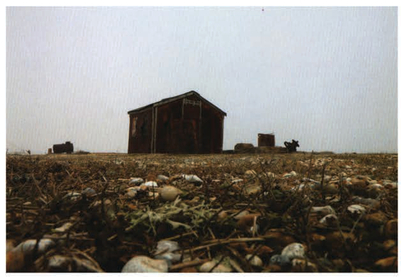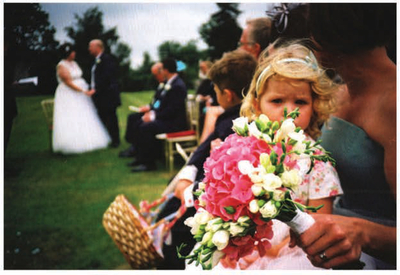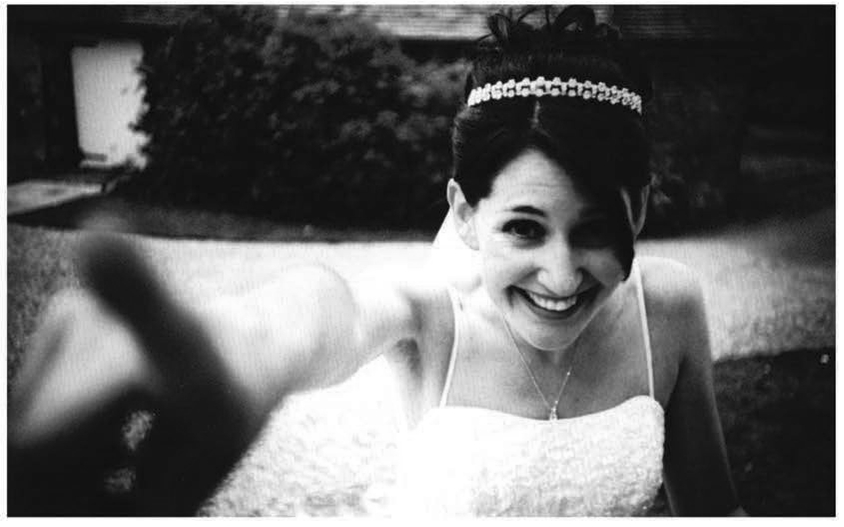36 Shallow depth of field
Isolating your subject
Kevin Meredith
The Idea
An understanding of depth of field (DOF) gives you much greater control over the appearance of your photos. You can use it to isolate your subject from its surroundings, to create dreamy images, and to quieten down noisy backgrounds. You can also use it simply to give an unusual view of something. One of the reasons an image can become more visually appealing with a shallow DOF is because it is different from what people are used to seeing.
Wedding Day Cinematographer Using a shallow depth of field is good for drawing the viewer's eye away from what would usually be the most important part of an image— it shifts the focus.
The Ingredients
- ▶ Any camera
- ▶ A subject or view
The Process
DOF refers to how much of an image is in focus. If you have a wide DOF, more is in focus; if you have a narrow DOF, less is in focus. There are a few things that can affect the DOF in a picture, but the main one is aperture. When you buy a lens or camera you need to take note of its widest aperture, and remember, the wider the aperture, the shallower the DOF you can achieve.
If you open up the aperture, by selecting a low f-number {around f/2.8), you will get a shallow DOF. If you close down the aperture, by selecting a higher f-number (around f/11), more of your photo will be in focus, You can see this in the images of huts on page 200.1 focused on the huts for both shots; the only difference between them is how I set my aperture. In the image with the blurry foreground I opened the aperture up whereas, in the sharper version, I closed it down,
If you are shooting digitally you have the advantage of being able to check the DOF on your LCD screen once you have taken your shot. It's a good idea to zoom in to a small part of the image on the back of the camera so you can see how much is in focus; there is nothing worse than finding out too much is out of focus when you don't have the option to reshoot. On a film SLR, and on most DSLRs, you can preview your DOF if you hold down the DOF preview button, This is usually located near the lens, but check your camera's manual.
Manual control of aperture
You can set manual control of aperture on all SLR cameras, and on a lot of compact cameras, through the mode dial. On Canon cameras you need to turn the dial to Av and on Nikon cameras to A. (Other camera models will be similar; check your manual.)
Auto aperture
If you are using a camera that sets its own aperture (like a Lomo L-CA), you can judge what the DOF will be. If you are in bright conditions or are using a fast film, the camera will need less light so it will close down its aperture. If the aperture closes down you get a wide DOF. If it's an overcast day and you are using a slow film (around ISO 100), the camera's aperture will open up, giving you shallower DOFs. Put simply, if it's bright you will have a wide DOF; if it's night you will have a shallow DOF.
Distance of subject
Another factor that can affect DOF is how far your subject is from your lens. The closer the point of focus is to you, the shallower your DOF will be. The most extreme example of this is macro photography for which the DOF can be as little as a fraction of an inch. The vast majority of people who own a camera have a digital compact or a camera phone. It is always hard to get a shallow DOF with these cameras, but one thing you can do is try to move really close to your subject to get the DOF as shallow as possible.


Beach Hut I focused on the hut for both of these shots; the only difference between them is how I set my aperture. In the image with the blurry foreground I opened the aperture up whereas, in the sharper version. I closed it down.
Focal length
Focal length has an affect on DOF as well: the longer the focal length of a lens, the shallower the DOF will be, A 200mm zoom lens will have a shallower DOF than a wide-angle lens. At the extreme end of wide-angle lenses you can get shots where virtually everything from a few centimeters to infinity can be in focus.
Effects
You can use DOF to create subtle effects arid lead the viewer's eye to specific points: To exaggerate DOF, a simple trick is to have objects very close to the lens.

Child's Bouquet In most wedding photos your eye would wander to the bride and groom, but, because of the shallow depth of field, the locus is shifted to the child and the subject of the photo is changed

I got the bride to point at the camera; her finger was only an inch from the tens, but it is totally out of focus, which gives the image a real sense of depth.
Portraits
If you have a lens that can open its aperture right up to f/1.4, there is a temptation always to shoot on f/1.4 to get really blurry backgrounds, but this can cause problems. If you take a portrait with a really open aperture, your subject need move only an inch away from or toward the camera and they will be out of focus. It's a good idea to focus on a person's eyes when taking a portrait-as long as the eyes are in focus, nothing else matters. This is because people looking at a picture of a person will always look at the eyes first. (For more on aperture, see page 285.)

